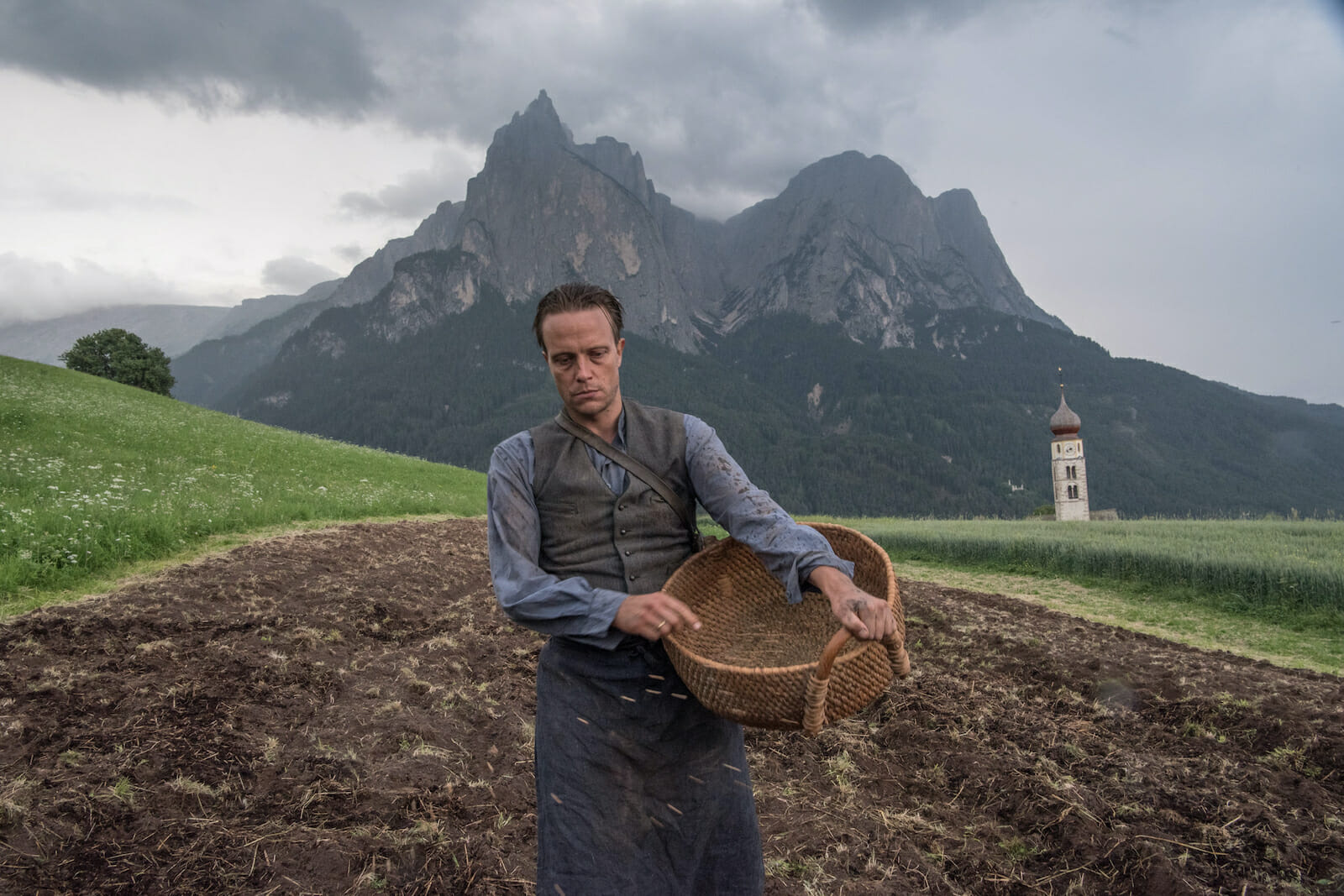
‘A Hidden Life’ Review
With a title pulled from a line in George Eliot’s “Middlemarch,” enigmatic filmmaker Terrence Malick continues his deep probe into humanity and faith…recurring themes in most of his films, and especially the run that began with his excellent The Tree of Life (2012). A Hidden Life is easily his most accessible over that period, as it focuses on the (mostly) true story of WWII conscientious objector Franz Jägerstätter.
The film opens with contrasting images: a black screen with sounds of nature fading to a bucolic Austrian Alps village versus dramatic historical clips of Hitler (I believe from Leni Reifenstahl’s 1935 Nazi propaganda film Triumph of the Will). The rural farming village we see is Sankt Radegund, the idyllic community where Franz Jägerstätter (played by August Diehl, Inglourious Basterds) lives off the land with his wife Franziska “Fani” (played by Valerie Pachner) and their three young daughters. It’s a family bonded by love. The family and fellow villagers go about the rigors of daily life as the war spreads. In 1940, Franz is sent to Enns Military base for training, and is then returned to his village under a farming exemption.
What follows is a first-half filled with dread as Franz struggles with his own beliefs in a new world order that has no room for individual thought. He refuses to swear an oath to Hitler, despite the rest of the villagers doing so. He knows what this means, as does his wife: he is vilified as being something worse than an enemy – a traitor. He holds firmly to his principles…vague to us, yet crystal clear to him. He becomes a pariah in his own village, as even the priest urges him to relent by stating he has “a duty to the fatherland.”
“Don’t they know evil when they see it?” Franz asks the question we have all been asking since Hitler came to power. When he is called to duty in 1943, Franz and Fani know the eventual outcome. Franz is asked by many, and in various ways, “What purpose does it serve?” No one can make sense of his stand. As he is imprisoned at Tegel Prison, solicitors played by Matthias Schoenaerts and Alexander Fehling both try to convince him to pledge loyalty and save his life. Franz’s response is, “I can’t do what I know is wrong.”
With the first half being filled with dread and anxiety, the second half is all about suffering. Franz is locked away with very little access to the nature or family he holds so dear, while Fani is a village outcast, trying desperately to raise their daughters and put food in their mouths. They are each in their own prison – isolated from the life they love. From Tegel Prison in 1943, Franz writes many letters to Fani; they are philosophy mixed with hope and love, and provide the source of how his story was discovered many years ago.
Anyone familiar with Malick’s films know that each is a visual work of artistry. Instead of his usual cinematographer, 3-time Oscar winner Emmanuel Lubezki, this film features the camera work of Jörg Widmer (who assisted Lubezki on The Tree of Life). The film lives up to our expectations, especially in capturing the vitality and spirit of nature through lush landscapes, mountains, trees, grasses, gardens, streams, rivers, and a waterfall. The family is one with nature, which stands in stark contrast to Franz inside the cold prison walls. Composer James Newton Howard brilliantly uses a lone violin, as well as a mixture of classical music. This was the final film for two extraordinary actors who recently passed away. Michael Nyqvist plays the Bishop who tells Franz that if God gave us free will, then we are responsible for what we do and what we don’t do. Bruno Ganz plays the head judge on the committee that decides Franz’s fate.
We could describe the film as either a tragic love story or an ode to faith and principles. Both fit, and yet both fall short. Terrence Malick is a confounding and brilliant and artistic filmmaker. After his breakthrough film Days of Heaven (1978), he took a 20-year hiatus before filming The Thin Red Line (his other WWII film). Recently he has proven much more productive, yet he remains a meticulous craftsman – taking three years to edit this film. His visual style is quite unique, yet he has the skill to make a messenger’s bicycle bell send chills. He was able to meet Franz’s surviving daughters (now in their 80s) prior to filming, as they still live near this village. We are quite fortunate that this exquisite filmmaker is allowing us to tag along on his search for the meaning of life and his exploration of faith…just make sure you set aside 3 hours for the lesson.

